#credence painter
Text
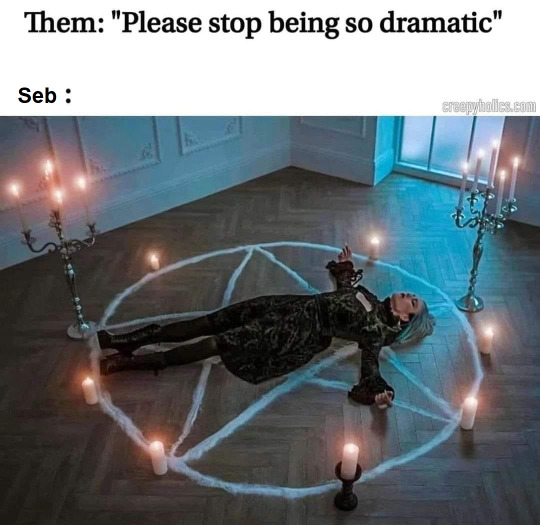
More Hogwarts Legacy memes, including my own character, Credence Painter






Anne Sallow is 100% ADHD don't @ me

Blood Defied, the fanfic that introduces Credence Painter
Ominis Gaunt x Cree
The og meme thread
#fanfic#cici art#memes#hogwarts legacy#ominis gaunt#credence painter#sebastian sallow#anne sallow#fanfiction#meme#funny meme#writing#my writing#hogwarts legacy memes#making fun of myself#making fun of my fanfics#ominis my beloved#funny#hopefully#hogwarts legacy fandom
59 notes
·
View notes
Text
10 More Character Types the World Needs More of
Part 1 was specifically character dynamics, but I’m considering this a sequel anyway.
1. Fiercely independent character’s lesson isn’t to “trust people”
I’m not projecting. You’re projecting. There is a divide wide enough to fit the Grand Canyon between “trusting that someone isn’t lying” and “trusting someone to follow through on a promise”. Most dumpster fire attempts at these characters (almost exclusively women) rely solely on mocking them for the former because “not all men” or something.
Being consistently let down in life makes you hesitant to a) gain friends, b) pursue romantic interests, c) maintain familial relationships, d) get excited about any event that demands participation from someone who isn’t you. None of this is simply a bad attitude—it’s a trauma response. There is no lesson to be learned, and not even exposure therapy can help because it’s a real, legitimate, and common stunt people pull, whether they mean it or not.
So write one of these characters and legitimize their fears, give them someone who proves the exception to the rule, but do not let the lesson be “well they just haven’t found the right person yet”. Even the “right person” can let them down. It's about not becoming a self-fulfilling prophecy by sabotaging a good thing to prove it will inevitably go bad.
2. Conventionally attractive men who aren’t horndogs
I’m going to find every way I can to tell you to write more aces. This is to fight the stigma that attractive people must be attracted to people. Give me gorgeous aces and demi’s, men, women, enbys and everyone in between, who put a crap ton of effort into looking their best, and yet happen to not have a very loud libido. They look good for themselves, and not to impress anyone else.
Give me someone who could have anyone they wanted, gender regardless, and just simply has no interest. Or, they do actually have a significant other, but sex, how hot their partner is, or how horny they are, isn’t their internal monologue. I don’t even care if it’s unrealistic, it’s annoying to read.
And, you know, giving men male characters who aren’t thinking about sex all the time can be good, right? Right?
3. Manly warrior men who also write poetry
A.K.A Aragorn, Son of Arathorn. Just give me more Aragorns, period. This dude is either covered in filth, blood, guts, and the last 30 miles of rugged terrain, or singing in Elvish at his own coronation while pink flower petals fall. A man can be both, and still be straight.
A man can also drink Respect Women juice, you know? He ticks off all the boxes—he’s gentle when he needs to be, not afraid to hide his emotions, kind to those who are vulnerable and afraid and need a strong figure to look up to, resolute in his beliefs, skilled and knowledgeable in his abilities without being arrogant or smug, and the first boots on the battlefield, leading from the front.
4. Characters who are characters when no one is watching
This is less a specific type and more a scene that doesn’t get written enough. This whole point comes from Pixar’s Cars. I. Love. This. Movie. It’s not Pixar’s best, for sure, but this is my comfort movie. The best scene, one that’s so unique, is when Doc (aged living legend) thinks he’s alone when he rolls out onto the dirt race track and comes alive tearing around the oval.
This character’s unbridled, unabashed glee and euphoria at proving to himself that he’s still got it, when he’s completely unaware of his audience, is perfection. Not enough credence is given to characters to just… enjoy being themselves. He’s not doing it to prepare for the climactic race, he’s not doing it for the plot, he’s doing it just to do it, not even to prove Lightning wrong—just for himself.
Give your characters a “Doc Racing” scene. Whatever their skill is. Maybe they’re a dancer, a skater, a swimmer, a painter, sprinter. Just let your character love being alive.
5. Characters whose neurodivergence isn't “cute”
A.K.A. Lilo Pelekai from Lilo and Stitch. Really, her relationship with Nani is peak sibling writing. But Lilo herself is just so realistic with how she interacts with the world, how she interprets her relationships with her so-called friends, how she organizes her thoughts and rationalizes what she can’t quite understand, and how friggen smart she is for an… 11-year-old?
But she’s not “cute”. As in, she wasn’t written by generic Suits who were trying to cash in on the ND crowd by writing what they think will sell, but also making her juuust neurotypical enough to still be palatable by the rest of the audience. Lilo’s earnestness is what endears her to everybody. But also, she doesn’t get a free pass for her behavior, either. Her “friends” aren’t forced to accommodate her and Nani isn’t written as the cold-hearted villain for trying to discipline her.
6. Straight male characters with female friends
Am I double-dipping a bit here? Yes. While I completely understand how tempting it can be, this type of character is in dire need of exposure and representation to prove it’s possible. No weird tense moments, no double-glances when she isn’t looking, no contemplations about cheating on his girlfriend (and no insecure jealous girlfriend either). Just two characters who enjoy each other’s company and are able to coexist in a space and be in each other’s spaces without hormones getting in the way. Peak example? Po and Tigress from Kung Fu Panda.
Let these two rely on each other for emotional strength in times of need, let them share inside jokes, let them have a night alone together at a bar, at home, cooking dinner, getting takeout, talking on the patio in a porch swing… with zero “will they/won’t they.”
7. The likable bigot
I’m actually on the fence with this one but it’s something I also don’t see done often enough and I’m adding it for one reason: Bigots aren’t always obvious mustache-twirling villains and the little things they do might seem inconsequential to them, but are still hurtful. So showing these characters is like plopping a mirror down in front of these people and, I don’t know, maybe something will click. They don’t have to be MAGAs to be dangerous, and only writing the extremes convinces the moderates that they aren’t also the problem.
Example: I have a “friend” who recently said something along the lines of “I have lots of gay friends” followed up shortly by “I don’t think this country should keep gay marriage because it’s a slippery slope to legalizing pedophilia.” You know. The quiet part being that she *actually* thinks being gay is as morally abhorrent as being a pedo. But she totally has lots of gay friends. Including one who was driving her during that conversation. (It’s me. Hi. I’m apparently the problem, it’s me.)
She’s absolutely homophobic, but the second she stops announcing it, she’s a very bubbly person. She’s a ~likable~ bigot and thus thinks she can distance herself from the more violent ones.
8. The motherly single father
I say “motherly” merely as shorthand for the vibe I’m going for here. “Motherly” as in dads who aren’t scandalized by the growing pains of their daughters, and who don’t just parent their sons by saying “man up boys don’t cry”. Dads who play Barbie with their kids of either gender. Dads who go to the PTA meetings with all the other Karens and know as much if not more than they do about the school and their kids’ education.
Dads who comfort their crying kids, especially their sons. Dads that take interest in “feminine” activities like learning how to braid their daughter’s hair, learning different makeup brands, going on nail salon trips together. Dads who do not pull out the rifle on their daughter’s new boyfriend and treat her like property. Dads who have guy friends that don’t mock him and call him gay. Dad who does all this stuff anyway and is *actually* gay, too, but the emphasis is on overly sensitive straight men’s masculinity here.
Wholesome dads: a shocking amount of single-parents to female anime protagonists.
9. The parent isn’t dead, they’re just gone
Treasure Planet is an awesome movie in its own right, but what’s even better? This is a Disney movie where the parent isn’t dead, he’s just a deadbeat who abandoned his son and isn’t at all relevant to the plot beyond the hole he left behind for Jim to fill. The only deadbeat dads Disney allows are villains and those guys are very vigorously chasing an aspiration, that aspiration just doesn’t include quality fatherhood. Or motherhood. Disney has yet to write a deadbeat mom, I’m almost certain.
I just wrote a post about the necessity of the “dead parent” cliche, but what is perhaps more relatable because it’s more common, and what earns even more sympathy and underdog points for the protagonist? The hero with the parent who left. Then there’s a whole extra layer of angst and trauma available when your hero can now plague themselves with the question of if the parent leaving is their fault. Death is usually an accident. Choosing to abandon your kid is on purpose.
10. Victim who isn’t victim-blamed or told by their friends (and the narrative) to forgive their abuser
Izuku Midoriya lost so much support from me the moment he told his friend, bearing the consequences of domestic violence across half his face, that Midoriya thinks he’ll be ready soon to forgive his abomination of a father. I am firmly in the “Endeavor is a despicable human and hero” camp and no I’m not taking criticism. I audibly gasped when I heard this line and realized Deku was serious. Todoroki needs friends like the Gaang to remind him that he's allowed to hate the man who's actions caused the burn scar across his f*cking face.
I understand that the mangaka apparently didn’t anticipate the vitriolic backlash toward Endeavor during his debut and reveal of his parenting tactics but the tone-deafness of telling a fifteen year old with crippling emotional management issues and a horrible home life that his abusive dad in any way deserves and is entitled to forgiveness on the grounds of being related is disgusting.
Take it back further to a more famous Tumblr dad: John Winchester. Another despicable human who got retroactively forgiven by his sons after his death in a “he wasn’t so bad, he really did try” campaign. It’s one thing if the character believes it, it’s a whole different matter if the narrative is also pushing this message.
Katara is a perfect example: She lets go of her grudge for her own peace of mind and stops blaming Zuko for something he had no hand in, stops blaming him simply because he’s a firebender and he’s around to be her punching bag. She doesn’t forgive the man who killed her mother, because that man doesn’t deserve her forgiveness. Katara heals in spite of him, not because of him, and had she let him off the hook, she would have gotten an apology for getting caught, not for what he did (which is exactly what happened).
#writing advice#writing resources#writing tips#writing tools#writing a book#writing#writeblr#character design#character development#aragorn#pixar cars#kung fu panda#lilo and stitch#treasure planet#atla#katara#my hero academia
103 notes
·
View notes
Text
I talk a lot about the crappy dads, so tonight I will talk about the good ones!
I'll start with Frank from The Dragons' Cosmos. He has three kids (Kurt, Noah, and Roxie) and struggled to raise them on his own after his wife left Hetarria (planet). Kurt tries to step in and help take care of his little brother and sister because Frank is so busy working. The family moved in with Dolores (Frank's mother) because of the long hours - rather days, because Frank drives a truck between cities - and to prevent them from being homeless when he could no longer afford the trailer they were living in.
Frank did everything he could to alleiviate Kurt's sense of responsibility. He wanted all three of his kids to enjoy their childhood.
He's a really caring father. His kids look forward to his brief stops into town, and he misses them dearly while he's gone. He's pretty excited when Noah and Roxie (never both at the same time, especially when they have to take care of Dolores too) are old enough and have no school for a few weeks, so he just rotates taking them with him on the road.
It's kind of sad, though... He was a brilliant painter, and his scenic art is gorgeous, but he never has time to paint. :'(
Glynn from SGH is Thaddeus's stepfather, and he's so kind. He's gentle and sweet, and he talks to Thaddeus frequently about all sorts of topics. They'll chat about fishing (Glynn is a fisherman) or books they read together, and Thaddeus has fond memories of sitting in front of the fire with his parents while they mend clothes or read.
Ewan from The Hostile Credence is Niven's guardian. Niven's parents are dead (father never found, actually, but presumed dead), and Ewan takes him home and raises him as his own. They do have some difficulties during THC, because Ewan is a skeptic, and in this world... Well, some unusual things happen. It's a spoiler for the plot.
Ewan also takes care of Seth, who is Niven's best friend. He doesn't believe in banning friendships, despite that she's a mischief maker, and instead says that Niven is perfectly capable of making wise decisions without her influence, and he won't blame Seth for it. He reaches out to her later on, and he buys her fruits and vegetables from around the continent so she can try new things. She spends a lot of time in his library, reading books, as she grows up. And he proves that maybe everyone should have been encouraging and supportive of Seth, rather than berating her all the time.
So he's really a good father to two children. ;A;
(Niven and Seth aren't a couple. Niven's gay, Seth's a lesbian, and they are best friends.)
Then there's Stefan from Serrated Petals! He has two sons - a stepson (Roland) and a biological son (Stanley). While he tries hard to be a good parental figure for Roland (there are some fucked up reasons this doesn't work out), he's a pretty good daddy to Stanley. He'd fist fight Roland's father, Ernest, if he could get away with it.
(Ernest is negligent and treats Roland like he's property, and that can lead to him suggesting harsh discipline when Roland doesn't act the way he wants him to, but luckily he doesn't have main custody of him, nor does he want to.)
Roland doesn't like Stefan, though... Because Stefan made his mother, Minnie, less fun for Roland, and he liked their time together.
And also Roland kind of found Stefan attractive, and it kind of sucks when the hot guy becomes your stepdad. (And then you push his buttons for attention, and uh... Roland has always been a strange one. His first and everlasting crush is Otto Brynner, who has murdered entire armies. Absolute villainfucker. I think Roland just likes fucked up relationships.)
Stefan never picks up on this, and even when Roland's an adult, he tries to be supportive of him. ;A;
5 notes
·
View notes
Text
Extras Profile: Morton
One of the grand positives of “The Owl House” is that it devotes exceptional care to what I call the Big Three story elements: setting, characters, and - even more in the second season - plot. One facet of the characters is the truly incredible variety and creativity of the character design, stretching even to the background extras that keep popping up. Several of the characters, mostly at Hexside, have even been given semi-official names by the crew.
One of the early extras named in-series that has drawn my interest is Eda’s elixir dealer, Morton.

First appearing in “Hooty’s Moving Hassle,” Morton presents himself as an awkward and dorky alchemist/potionist who may not have a bunch of common sense given he spent all night poison tasting and wonders why he feels sick. However, at least to me, his earnestness is immediately appealing, as is his honest desire to help Eda, even if he doesn’t profit from it. This shows an unusual bit of integrity from one of the populace of the Boiling Isles. The fact that Eda calls him by name - and that he calls ner by a nickname, “E” - also implies that they’ve known each other for a while and that he owns the business Mr. Elixir - further evidenced by Morton’s cry for Eda’s release with “She helped me stay in business!”
Morton would continue to appear in the background of some episodes until “Keeping Up A-fear-ances,” where he refuses service to Luz without monetary payment - this and his desolation at a slow evening implying that Eda and Lilith are his main source of income. He next appears in “Elsewhere & Elsewhen,” where he appears as a guest at Hooty’s party thrown for Lilith to celebrate her new job. This implies that not only has he begun supplying Lilith with elixir for her curse, but he and Lilith have become acquainted enough for Hooty to consider them friends. Then again, he also invites Tinella Nosa, whom Lilith doesn’t seem to know, so he may have been stretching (Ha!) to fill the guest list. As of this post, this is his last major appearance.
Now for extrapolation and guesswork!
Morton’s job makes it almost certain that he’s a member of the Potions Coven. Simple and easy to figure. Though he aids and does business with wild witches, which is a real mark in his favor.
Given Eda’s proclamation as the “Most Powerful Witch on the Boiling Isles” and the fact that she was in the Potions track at Hexside, the fact that she doesn’t brew her own elixir stands out as strange. This is also noting that she, too, runs a small business selling potion - though this fact seems to have been forgotten after “Witches Before Wizards.” Eda even mentions to her mother knowing what goes into the elixirs. This implies early on that Morton actually brews the elixirs himself, which would further imply that he is remarkably talented in his field. Eda’s playful comment in “For the Future” about Lilith’s own elixir “putting Morton out of business” only adds credence to that idea.
Finally, an interesting note about his attire. Morton is always seen wearing a large funnel on his head like a hat. At first this seems like a quirky reference to his profession, but it may have a deeper meaning. In the time of Hieronymus Bosch - a Dutch painter whose surrealist works were a large influence on the look of the Isles and who has lent his name to two characters of the show - an upside-down funnel was a symbol of madness. Bosch himself used this imagery a few times in his works. Taken in context, one might think Morton is crazy - you know, for daring to do business with the Owl Lady despite her criminal background!
It really is a delight to find little tidbits about these background students that the crew has clearly put some thought into and stitch together a narrative. Had there been more time, I would have been happy to see more of Morton.
Thanks for reading! More to come …!
12 notes
·
View notes
Text
The artist must be nothing more than a “Medium”
Art transmutes you in an existential way, asks questions, and it connects you to worlds and conceptions you didn’t even know subsisted, at least not consciously. It’s a woeful truth most artists must reconcile at some point in their ingenious lives: the role of the arts is perpetually being queried. Many might question whether art is imperative , quite usually when the subject has to do with subsidizing arts curricula. For others, there is no debating the credence that the arts have never been more consequential to our society and should be plenarily integrated into our lives, our community and inculcation in general. I truly believe that artists, while doing what they do, are only a passage through which art flows out, almost as if born of itself, denuded of the artist's ego. The artist is no more or less than an implement in which great art is engendered. I believe that the artist should inherently experience their own means to an end, for their art to be born and flourish, lest their conscious presence detracts from the art itself. The artist must be nothing more than a “medium” through which art permeates, sanctioning for pristine expression devoid of the artist’s ego. The artist and their artwork’s symbiotic relationship must suffer for the art to flourish, to stand alone, to withstand the transmutations of time. The demise of the artist, which I believe occurs at the same time as the confinement of the art — be it carvings, painting, or making of films or music — sanctions the viewer/appreciator to enter the piece. First, art is the barometer that measures levels of cultural sophistication. Throughout human subsistence, we have learned about cultural accomplishments from the cultural artefacts left behind. Many of these artifacts have left behind sempiternal marks on the planet.
If a story is what the random attestations threaded together in uniform unvarying structure induces in its reader, then why shouldn’t the smears of paint, or obliterates on marble only thing to look at? Art can communicate information, shape our everyday lives. When you take a look at any brilliant works of architecture you notice how iconic structures are a piece of art that conveys paramount messages about the time, place and context in which the structure was engendered. In integration with providing commentary about the more larger culture, art makes life more manageable, tolerable and relishable.
One may not cerebrate about more utilitarian artefacts and places as art, but they do play a part in one’s inventive ordeal. Furthermore, art can elucidate to the conception of death. Cairenes mummified humans and laid them to slumber in sumptuous tombs, while today individuals place profoundly relished ones in the ground (or and adorn that reposing place with plaques, memorials and flowers.. El Dia de Los Muertos celebrates the passaging of doted ones and recollects them by visiting them, beni facing and the notion that their souls remain near. These cultural and societal norms, coalesced with our scientific discernment, allow us to process life and death more holistically. Personally, I think of big names such as mexican painter Diego Rivera , and how much we have gotten to peek into his soul thanks to his artwork, and many mural based portraits. I envision Jackson Pollock, which in all veraciousity , I can’t exactly comprehend what he was endeavouring to verbalize with his sublime colors...but I do comprehend what the art tried to convey to me, and how I feel moved and seen and accepted in front of them. I think of emerging artists. I think of Vincent Namatjira and his resplendent work. The artist needs to be alive, especially when their ideologies are salient in specific times and places. The artist might additionally have to die in their relationship with their engenderments, in order for us to fabricate our own relationship with the pieces and anatomization of them. For a lot of people, art has to be a voice, puissance, conveyance of life and more. Art drives humans to look beyond that which is indispensable to survive and leads people to engender and create for the sake of voice, expression and construal. In fact, I believe existence has no meaning without art. That in itself is how it brings society together because there is no experience without art.
Reframing you is an event organiser for artists and mental health experts globally. A non profit initiative that focuses on providing a FREE platform for people to communicate with experts in all fields from all around the world because not everybody has the privilege to do so. It prioritizes the benefit of people, mental health problems and for upcoming/well known artists to express themselves and talk about their journey and advise people who are interested in their field. Its anthem is “Reframe you, Reframe Society.”
2 notes
·
View notes
Text
Books I’ve read

Maybe Not - Colleen Hoover
The Cruel Prince - Holly Black
Twisted Love - Ana Huang
Shatter Me - Tahereh Mafi
Never Never - Colleen Hoover & Taryn Fisher
A Court Of Thorns And Roses - Sarah J. Maas
Fazbear Frights #1
Fazbear Frights #2 (DNF)
The Spanish Love Deception - Elena Armas
Ready Player One - Ernest Cline
The Haven - Carol Lynch Williams
The Wicked King - Holly Black
Priest - Sierra Simone
A Court Of Mist And Fury - Sarah J. Maas
Queen Charlotte - Julia Quinn & Shonda Rhimes (DNF, literally just copy pasted the shows script to the book. This guy put me in a lil slump)
Unravel Me - Tahereh Mafi
A Good Girls Guide To Murder - Holly Jackson
Twisted Games - Ana Huang
The Queen Of Nothing - Holly Black
Things We Never Got Over - Lucy Score
How The King Of Elfhame Learned To Hate Stories - Holly Black
This Is Where It Ends - Marieke Nijkamp
Unite Me - Tahereh Mafi
Ignite Me - Tahereh Mafi
Icebreaker - Hannah Grace
Verity - Colleen Hoover
The Fine Print - Lauren Asher
The Love Hypothesis - Ali Hazelwood
Twisted Hate - Ana Huang
A Court Of Wings And Ruin - Sarah J. Maas
For Butter Or Worse - Erin La Rosa
Crave - Tracy Wolff
The Stolen Heir - Holly Black
Terms And Conditions - Lauren Asher
The Nanny - Lana Ferguson
Archer’s Voice - Mia Sheridan
Things We Hide From The Light - Lucy Score
A Court Of Frost And Starlight - Sarah J. Maas
King Of Wrath - Ana Huang
Fourth Wing - Rebecca Yarros
The Inheritance Games - Jennifer Lynn Barnes
Love On The Brain - Ali Hazelwood
Credence - Penelope Douglas
Haunting Adeline 1 - H.D Carlton
By A Thread - Lucy Score
Twisted Lies - Ana Huang
The Hawthorne Legacy - Jennifer Lynn Barnes
Loathe To Love You - Ali Hazelwood
The Deal - Elle Kennedy
The Love Wager - Lynn Painter
Final Offer - Lauren Asher
Love, Theoretically - Ali Hazelwood
The Help - Kathryn Stockett
Ready Player Two - Earnest Cline
It Ends With Us - Colleen Hoover
It Starts With Us - Colleen Hoover
Love & Other Words - Christina Lauren
The Hunger Games - Suzanne Collins (currently reading)

#the timeline is from March 20th to now#March 2023 - present#updated: May 21st#updated: June 1st#June 5th#June 20th#June 26th#several days between June 26th to august 16th#aug 21
2 notes
·
View notes
Note
paintings where the draw is high amounts of technical skill are very hard to capture on camera. it’s often something that needs to be seen in person to actually see the difference. consider why you’re so mad about something someone else considers art and take that energy to fuel creating your own instead
If this is about the all red painting how about you consider why snooty art people feel the need to assert that something that can almost only be seen as artistic to snooty art people must be appreciated as art by the general public? Note the video you weirdos are even responding to are two girls reacting to art they saw IRL, so not secondhand in a camera, PLUS the person making the video even mentions it being common for people to not appreciate these paintings. Like it may be corny but art last time I checked was all subjective and it’s up to the people perceiving it to say if it’s good or not, not the painter or snooty art people. Like sure you can argue that you may have a higher appreciation for the art, but if the average person doesn’t see artistic value in a red canvas there is some credence to that and the irony is it’s snooty art people like you who are the ones getting mad that people really don’t care what you do. Maybe channel that energy into creating something better?
0 notes
Photo

Translated interview
Adèle Haenel: Figurehead of the new French Film
by Daniel Kalt, in: Die Presse, 13th of December 2019
Additions or clarifications for translating purposes are denoted as [T: …]
Adèle Haenel talks about her new film, gender roles and a new cinema by women, which oddly doesn’t give much space to men. [T: 😊]
Adèle Haenel came to Vienna for the Viennale [T: annual Film Festival, here: 24th of October to 6th of November 2019], playing the lead role in the opening film ‘Portrait of a Lady on Fire’. It’s one of those hot almost summer-like autumn days, prior to the photo shoot Haenel is sitting in the scorching heat on the terrace in front of the studio and greets a purring cat, which is passing by, in German. Haenel is the daughter of an Austrian translator, and grew up in [T: Montreuil, in the Métropole du Grand] Paris. According to her, she spoke the [T: German] language as a child, but forgot about it later on, ‘as is often the case’. Only for her role in Chris Kraus’ film ‘The Bloom of Yesterday’, where she plays alongside Lars Eidinger, did she relearn German. [T: Now] in Vienna, the actress, who is one of the most celebrated in contemporary French cinema, is a bit tired after a long promotional tour for her film, which [T: all] began in Cannes. The uproar, which Adèle Haenel will cause a couple of weeks later, when she accuses the French director Christophe Ruggia of sexual harassment that took place during the shoot of her first Film ‘Les Diables – she was still half a child then [T: !?] – preceded Vienna and is therefore not mentioned here. Because of her film projects and her statements as a prominent creative artist it seems obvious to ask whether she considers herself a feminist, to which Haenel responds in a heartbeat: ‘Yes, absolutely. And in capital letters, go ahead and write down FEMINIST.’

Adèle Haenel plays young Héloïse in her new film, which is now shown in cinemas across Austria, and is directed by Céline Sciamma (the two women were a couple for some time, it is their second joint production). After the death of her sister, [T: Héloïse] was brought back from the convent to her family’s home on an island in Brittany. The story takes place in the late 18th century, Héloïse is supposed to be married off to Milan. But first, it’s necessary to send a portrait to her future husband, which should please him. Héloïse refuses the gaze of the painter – the ‘male gaze’ –, who was commissioned to paint her. So, her mother resorts to a trick and hires another artist [T: called] Marianne: She should spend a couple of days with Héloïse as her companion, without revealing her [T: secret] mission. Through gazing at her furtively and catching glimpses of details – lips, an ear, the position of hands –, will she piece together a portrait of Héloïse. But tension builds between the two young women, which leads to a short-lived and passionate affair.

Interviewer: Your new film takes place in the late 18th century – how did you prepare for the role?
Adèle Haenel: This wasn’t my first period film, ‘L’Apollinide’ [T: House of Tolerance, 2011] for example is also from the same era, just before the French Revolution. Besides, I have mainly tried to create the character of Héloïse around a certain concept, a certain image. The historic perspective wasn’t key for me to prepare for the role. Playing in costume was mostly to place this [T: film] in a certain time. But it wasn’t my top priority to lend credence to my character by putting it in a historical context.
I: What is the main theme for you: love, art, liberty, the liberty of art?
AH: The film is mainly about love and particularly about what love can be. It is about desire, the pleasure of intellectual exchange and a blossoming friendship. And then there is also the aspect of art and artistic expression, which leads to an extraordinary relationship between the two main characters. Another important point was also to show love that’s different to what you usually see in films: It is not love at first sight, no ‘coup de foudre’ [T: repeats the same phrase in French], but emotions that are developing slowly and in which you immerse yourself, because they are connected with deep admiration. The film also explores in-depth the central theme of the ‘female gaze’ as counterpoint to the dominating male gaze, which has been prevalent in cultural products for a long time.

I: Does it make a difference for you to be ‘directed’ by a female director, as the term ‘director’ implies in English?
AH: I’d like to state here that I’m an extremely political person. That is why it is important to me to describe the relationship between the actress and director [T: the female form of director is used here] accordingly: It is not a vertical relationship for me, where I’m directed by an opposite, but an equal exchange. We developed this film together, conceptualising love in a way where one character does not dominate the other. I also have a responsibility to carry as an actress, especially in a film like this, which is constructed around the gaze and the person who is looking [T: both genders are included here]. My character is not a passive muse, we tried to break this idea. In fact, it is not the story of an artist [T: male form is used here], who enters a room and sees a woman who inspires him, but something completely different.
I: Would you say that Héloïse is at first motivated by anger about the situation?
AH: You could talk about anger, but this means to break down the bigger issue of resistance to an individual level. It’s not mainly about the anger of this character, but it’s about how she as a woman reacts to her specific situation. Society often denies women the right to live as we want to or our own projects. That’s why I think it’s better to talk about resistance against the entirety of the patriarchal system.

I: How did you express this in the way you acted?
AH: In the beginning Héloïse’s gestures and facial expressions are quite restricted, very much contained. The love story then takes up more space over time, likewise my acting is becoming more generous. That also makes sense from a political point of view: At first there’s the question how to resist the ruling order: Either you sacrifice yourself, because you’re caught up in the system. Or alternatively, as I chose to do for Héloïse, through absence and withdrawal. This means, I negate my existence and I’m only present as detached figure – as object, so that no one comes close to me as subject. My absence is therefore a way to resist.
I: Was this the first time you’ve structured a role like this?
AH: Yes, although I always ask myself profound questions when preparing for a role. That’s the main theme for me, how to create feelings and emotions that leave behind the screen.

I: Do you have a desired impact in mind with your craft?
AH: I would like to spark off something like a mimetic reaction among the audience, which goes beyond the feelings and emotions in the film. [T: 🔥] Let’s call it a vibration, which resonates in real life and which I would like to set off. That’s all the more important, because it allows for new storytelling. In ‘Portrait of a Lady on Fire’ we make fun of the patriarchy. A conscious decision was made to almost entirely exclude men from the picture. We don’t convey a political message openly, but instead are very concrete by not showing something.
I: Do you consider yourself a feminist?
AH: Yes, absolutely. And in capital letters, go ahead and write down FEMINIST. And you, are you a feminist? I see the reluctance to openly support feminism among men rather than women. There are of course women who are sometimes reluctant to support feminist demands. But this is the result of a specific system, in which women are oppressed. There was and still is an expectation for us to subordinate ourselves, or even become extinct. The time for women to speak is always less than for men, irrespective of the context. And this is despite the stereotype of women talking more in general: Gloria Steinem quite rightly says that it’s not about the actual time that women are speaking, but about the silence that is expected of them.

All pictures by Elsa Okazaki
#Adèle Haenel#Austrian interview#Portrait of a Lady on Fire#My translation#Thanks for breaking my brain Adèle#FEMINIST in all caps#Musings of a Woman that wouldn't have it any other way#long post
511 notes
·
View notes
Photo

Some people are born to be thrown away
#credence barebone#fantastic beasts and where to find them#harry potter#hp#magic#obscurial#obscurus#wizard#fan art#digital art#black and white#shadows#infinite painter#artists on Tumblr
79 notes
·
View notes
Text

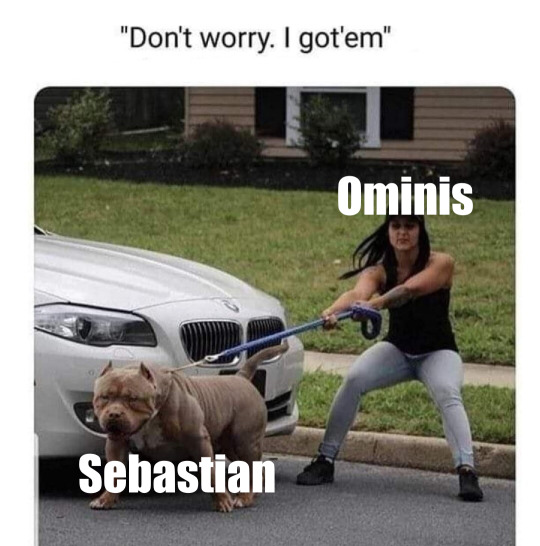


One for my own OC because why not. Read about her and Ominis' budding relationship overcoming abandonment issues and PTSD here:
Blood Defied Chapter List
My girl is just the dumbest Ravenclaw, you have to be direct
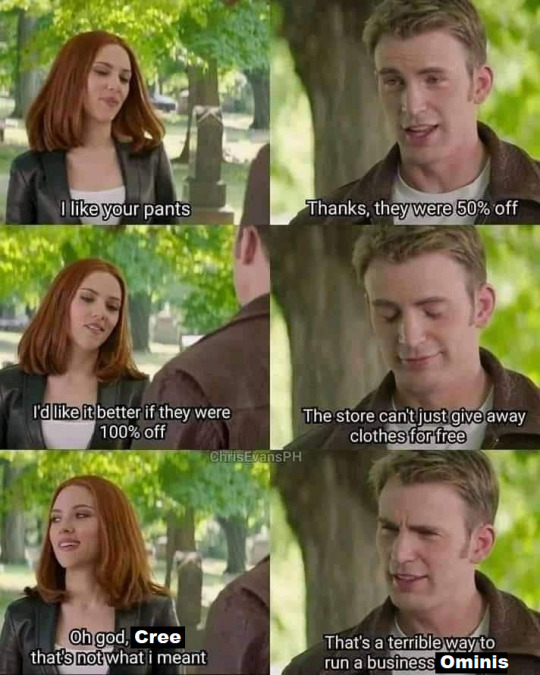
#memes#hogwarts legacy#hogwarts legacy meme#ominis gaunt#sebastian sallow#anne sallow#credence painter#ominis gaunt x oc#natsai onai#poppy sweeting#amit thakkar#garreth weasley#leander prewett#imelda reyes
102 notes
·
View notes
Text
I guess mostly I just can’t justify boiling down something as inherently collaborative as filmmaking (ESPECIALLY mainstream cinema) to like One Great Artistic Vision
and at the same time, it can be really beneficial to look at like Miyazaki’s or Scorsese’s or Varda’s chronological bodies of work and see their recurring themes and ideas, just like you can with any individual author or painter or composer (which I do ALL THE TIME)
but like, how can you attribute One Vision to a text and not give credence to the individual talents and visions the other artists bring to it? how can you look at Citizen Kane and say “this is the product of Orson Welles and Orson Welles alone” and ignore the work of Herman Mankiewicz or Gregg Toland or Joseph Cotten or Dorothy Comingore that are invaluable in making that film what it is??
again I haven’t actually studied any of this so all of this could be a misinterpretation. but like I even bristle at the idea of auteurism in theatre, where yes, you do have the consistent work of writers and composers and lyricists and directors and designers, but that’s a living text that by nature is constantly getting reinterpreted.
idk! idk. half-baked thoughts.
15 notes
·
View notes
Text
Giorgio Vasari’s Lives of the Artists states that the great Florentine sculptor, painter, and printmaker Antonio Pollaiuolo (ca. 1432–1498) was the “first master to skin many human bodies in order to investigate the muscles and understand the nude in a more modern way.” Giving credence to Vasari’s claim, Pollaiuolo’s highly influential engraving of the Battle of Naked Men (17.50.99) displays the figures of the nude warriors with nearly flayed musculature, seen in fierce action poses and from various angles.

1 note
·
View note
Text
Shyladrae Highbloom

(coming in Shadowlands)
The Enigmatic Socialite
The Basics ––– –
Name: Shyladrae Highbloom
Nickname(s): Lady Flowers
Age: Middle-Aged
Race: Quel’dorei?
Gender: Female
Sexuality: Bisexual
Marital Status: Widowed
Face/Body Reference: Christina Hendricks
Physical Appearance ––– –
Hair: Rivulets of scarlet and carmine, cascade akin to the pure and vibrant tones of an open wound. Several complicated braids of varying length are interwoven and laced with ribbons of fresh flowers--set to compliment color with whatever gown is worn.
Eyes: Wide, and almond shaped, they are acute points of a subtly glowing, almost spectral, beryl. An undertone of cryptic intensity burdens a kindly gaze.
Height: Although on the shorter side of average for a woman of High Home, her stature does little to dissuade from a regal, genteel bearing that seems consistently maintained.
Build: Blessed with a distinctive hourglass, this Highborne’s more buxom physique lends credence or clue to her more sybaritic lifestyle.
Distinguishing Marks: When those more brow-raising gowns are donned, a single marring may be visible just below the center of the woman’s sternum. A scar perhaps? Polite company should not, however, stare overlong.
Piercings: Multitudes of decorative piercings upon each elongated ear.
Common Accessories: Flowers are ever in attendance about her person, be they real or patterned--at times a spell-wrought mixture of both; those ostentatious gowns and trinkets never lack for these blooming motifs. A hand fan is also an ever present accessory, dangling from wrist or retrieved from some dress pocket.
Personal Information––– –
Profession: Aristocrat, Floriculturist, Philanthropist
Hobbies: Floristry, Curating, Theater, Reading, Artistic Ventures
Languages: Thalassian, Common, crude Dwarven and Darnassian
Residence: Likely somewhere lavish
Birthplace: South-Western Quel’thalas
Religion: There is a polite chuckle or delicate scoff towards the notion of religion--beyond that, she gives no more.
Fears: Confinement, Destitution, Blight, Certain Insects, War
Relationships ––– -
Spouse: Deceased--acknowledging only that she is a widow, she says no more on the subject.
Children: None?
Parents: Deceased?
Siblings: None?
Other Relatives: None?
Traits ––– -
Extroverted / In Between / Introverted
Disorganized / In Between / Organized
Close Minded / In Between / Open Minded
Calm / In Between / Anxious / ???
Disagreeable / In Between / Agreeable
Cautious / In Between / Reckless
Patient / In Between / Impatient
Outspoken / In Between / Reserved
Leader / In Between / Follower
Empathetic / In Between / Apathetic
Optimistic / In Between / Pessimistic
Traditional / In Between / Modern
Hard-working / In Between / Lazy
Cultured / In Between / Uncultured
Loyal / In Between / Disloyal / ???
Faithful / In Between / Unfaithful / ???
Additional information ––– –
Smoking: never / sometimes / frequently / to excess
Drugs: never / sometimes / frequently / to excess
Alcohol: never / sometimes / frequently / to excess
Flaws ––– –
moody | short-tempered | emotionally unstable | whiny
controlling | conceited | possessive | paranoid | liar
impatient | cowardly | bitter | selfish | power-hungry
greedy | lazy | judgmental | forgetful | impulsive
spiteful | stubborn | sadistic | petty | unlucky
Strengths ––– –
honest | trustworthy | thoughtful | caring | brave
patient | selfless | ambitious | tolerant | lucky
intelligent | confident | focused | humble | generous
merciful | observant | wise | clever | charming
cheerful | optimistic | decisive | adaptive | calm | loyal
RP Hooks ––– –
Patron of the Arts
From musicians to poets, and actors to painters, they are just some of the artists admired with her reverence and coin. As a self-described paramour of the arts, Lady Highbloom fashions herself a courtly sponsor within Azeroth’s art world.
Wealth and Prestige
The woman is most certainly a member of the gentry. It churns within her mannerisms, pours from her bearing, and demands notice with flamboyant clothing. She is one to conjure imagery of liquor and laughter, the soft clink of glass, and all the lavishness afforded those with capital. She flaunts her apparent wealth and status, by purpose or folly... perhaps a mix of both.
Rumors ––– –
A hushed bit of buzz circulates among those with aristocratic ties, a claim which states Lady Highbloom’s first cousin once removed is the shamed and notorious High Botonist Freywinn. Those elves born of Quel’thalas might find this rumor to be quite scandalous. Where such gossip originated remains a mystery.
She appeared quietly, and deftly seemed to integrate herself into both polite society and the artistic communities of the Alliance. As if conjured from the aether, none can truly say where this flower-obsessed Quel’dorei came from. Those more inclined to conspiracies debate her authenticity; Is she a spy? Is she even an elf at all? The cards of her history are always clutched far too close.
Her weakness for art in its varying forms is well known, but there is a soft bit of hearsay involving the Lady Flowers and several subrosa investments within the artistic community. Could these off-book, possibly criminal, ventures be true?

OoC ––– -
Hello there! Thank you for making it this far and taking an interest in Shyladrae! Although I don’t plan on going IC with her until launch, I still wanted to put some feelers out. Random asks of almost any sort are welcomed in the meantime! If you have any questions feel free to send me a DM!
18 notes
·
View notes
Text
Faye Wei Wei- Temple of Love
Paintings for The Temple of Love
To the viewer: I have curated this show with as much love as I can bare. After months of collecting fragments of entangled thoughts—poems, imagery, words of curiosity that would prick a thought in me—I handed a stream of my writings to my darling brother Alastair to interpret, in an alchemical way I could never dare to imitate—into the following beautiful introduction to my show. All I could say in answer to his question… “What is this painting exhibition about?” my reply, “It is about Love.” Thank you Alastair—once again, you write with the feeling that I can only express in paint, and you, in words.
“…and I was drawing her… and if you draw somebody carefully—you fall in love—and then you get unhappy, because you are married with somebody else.
Maybe that’s why she never uses models.
Yes… just photos, to protect yourself.
[long silence]” – Marlene Dumas
“I’ve seen you, beauty, and you belong to me now, whoever you are waiting for and if I never see you again, I thought. You belong to me and all Paris belongs to me and I belong to this notebook and this pencil.” – Ernest Hemingway
It’s only fair to admit that Faye did much of the work for me. She envisaged the show as a ‘reliquary for painting’ that somehow captured the intimacy and joviality of our mother’s dinners. What strange and delicious images to unravel.
She insisted on the importance of the Dumas Quote. I added the Hemingway. Together they capture some essential part of art’s erotic dimension: art involves a constant panting after an essential object, even as the artist is seduced by their work in turn. For both Hemingway and Dumas, their craft takes them closer to possessing the objects of their desire, closer to wholeness and closer to falling in love again. Through art and desire, reality conforms to these fantasies.
In ‘The Winter’s Tale’, Leontes’ throbbing, hysterical desire for Hermione’s statue to come alive is Shakespeare’s greatest testimony to the power of both art’s seduction and carnal desire. Love’s motions representing the dream, perhaps, of returning to an infinite wholeness or unity; continually promised, always deferred and ultimately denied. Art can prolong this little dream (how brief!); the painter must court the painted with a dance to inscribe the pair into eternity. This dance is the theme of the show. So Leontes worships at the altar and the statue comes alive, very well. We hope something similar will happen once these paintings begin to babble and brook amongst each other.
Regarding the title of the show, we must pay due credence to Hilma Af Klint whose ‘Paintings for the Temple’ inspired its name and its contents. Af Klint too dreamed of returning to wholeness. She believed her “pictures were painted directly through [her],” by divine beings called the ‘High Masters’. This is much the same force that moves the hand of all our painters, albeit in different guises. Regardless of how you feel about Klint’s occult spiritualism, in our disenchanted world of increasingly stiff-collared materialism, her work inspires faith in the magical; tuning the viewer to the extrasensory and the invisible. This faith, secular or otherwise, raises the possibility of joyful abandon, of casting oneself into oceans of mysticism and of pure feeling.
Every artist here has faith. They worship at Painting’s pagan altar, on hands, knees and ladders, hoping to be afforded a long look. To be blessed with some rich alchemy that will transmute mark to the gold of Affect.
So, in the Temple of Love, the paintings should seduce and flirt, bicker and argue. They might take a long look across the way. You see, the blue of this work is jealous of that red over there, they’re bedfellows and they love one another but the drink brings out the worst in them. The fleshy, generous paint holds these romantic sentiments at its breast.
Faye would like you all to leave with a crush.
“we paint and it is not by chance but by a real abundant care for the medium that we do so - and there must—there must—in some small part be some magic in painting” – Faye Wei Wei
[press release]
21 notes
·
View notes
Text
This letter and the reply of M. d'Angiviller, who approved his (Cochin’s) conclusions, contained for David the brilliant demonstration of the superiority which his painting assured him definitively over his contemporaries. He also received from abroad some very flattering testimonies of the esteem which the artists had for his talent. The English Courier sent him an article by Reynolds of the London Academy which, after noting, at the 1787 exhibition, the progress of the French School in the path of a higher and more true art, adds:
The general consideration of the objects could not remove the attraction that this painting had given me. It was the greatest effort of art from the Sistine Chapel and the Kapbael chambers in the Vatican. This piece would have done honor to Athens in the time of Pericles. Ten days of observation only confirmed the general idea that I had formed, that is, that it is perfect in every way.
This painting, whose subject is Socrates receiving the poison, is composed by M. David of the Academy of France. I will not undertake to detail it. The purpose of painting is to bring ideas to mind through images of a taste that can be better felt than expressed. Everything in this picture announces the infinite intelligence of the excellent master to whom he belongs. Twelve figures compete without distracting attention from the fact of what is happening. Accessories are naturally placed; expressions, lively and pathetic; the philosophical features are finely expressed. This great master knew how to open a very extensive career with this work.
“...M. David, aged around 37 years, had the goodness to show us several other paintings worthy of the great masters. He also showed us the works of his pupils, who are striving to become his rivals. His honest manner joins affection to the respect that we preserve for his astonishing productions.
The enthusiasm of the public for the Socrate was not confined to its creator alone. The man of taste who had inspired this beautiful passage also collected evidence of the recognition of amateurs. He was sent compliments, verses, and among others the following piece:
Epistle To M. de Trudaine
On the occasion of the artwork Le Mort de Socrate, painted by David and exhibited at the Salon
How happy is he whose munificence
Can be born and illustrated in lieu of abundance,
And who carries off his generous glance
He is the avenger of taste and the friend of the fine arts!
This is your advantage, o beneficent Trudaine:
You render a noble hope to the Muses of the Seine.
While that talent of these days are obscured,
For you, with divine fire, Zeuxis shines again,
And offers you homage from a painting sublime.
There, in the dark dungeons of cowardly Areopagus,
Greece saw the greatest of humans walking.
Socrates! nobly submitting to his destinies.
Sitting half-naked, on his rough bed
Gathering his friends in his final hour, sees them, smiles at them, and seems to speak to them
To instruct them again and to console them.
All weep, and in he alone is the soul unmoved.
One hand towards the sky, the other on the hemlock,
He senses, in death, immortality,
His forehead radiant with serenity.
Near the philosopher we perceive his lyre.
For Socrates had the glory of writing, in beautiful verses
These fables, whose features so well known, so vaunted,
Were first invented: Aesop.
O, attentive painter of ravishing magic!
The purest finish combining vigour;
He marks the weakened muscles of the old man;
The whitish tunic, lowered in great folds.
Bring out his foot by a half-tone.
And upon his leg, we still see the print of irons.
But the Sage’s speeches occupy the group,
Everyone then remains variously struck.
Those whose experience is the fruit of a old age
Show, in their sadness, a quiet courage.
The others, ardent youth, tears in their eyes,
Observe the old man with a more curious air,
While his executioner, in charge of hemlock,
Advances, jumping, and turns, averting his eyes.
Further away, Cebes alone, dejected and dismayed,
Sits there, inclined upon the stone.
His fear, his pity, his pain are mute.
He dropped his pencil, his tablets,
He listens, he meditates, he tries to remember,
What he has to say for the centuries to come,
And what Plato has traced in his faithful pages:
the immortal lessons drawn from Socrates’ death.
May this masterpiece makes happy the French Zeuxis,
Condemn now the unsuccessful paintings,
Where from the cold illumination of a petty brush
Outrages both art and nature;
Paintings that are seized upon too quick by the Salon,
Which always degrade instead of honor him.
But you must love this masterpiece, o Trudaine:
You who knew how to predict her certain glory.
Thus, always guide the comforting arts,
Only they can give these enchanting pleasures.
Let an elevated spirit seek and taste unceasingly;
And our nephews will say, praising your wisdom:
"It's for him, under the eyes of the Muses he served!
What did Delille sing, and what was David painting?”
Regarding the composition of the Socrate, some biographers attribute it to the gesture, so well positioned, of the philosopher holding his hand suspended above the mortal cup; some have a material error in setting of the tiles; others to the observation of Andre Chénier who, seeing him take the fatal kylex, would have said that "wholly to the great thoughts he expresses, Socrates must extend his hand towards the cup, but that he will only seize it when he's finished speaking."
We do not know what credence we must add to these anecdotes, but it seems to us that the habits of reflection that David brought in the composition of his paintings explain the appropriateness of this gesture, which, moreover, is also found in the composition of Peyron.
1 note
·
View note
Text
The Apotheosis of the Toiler
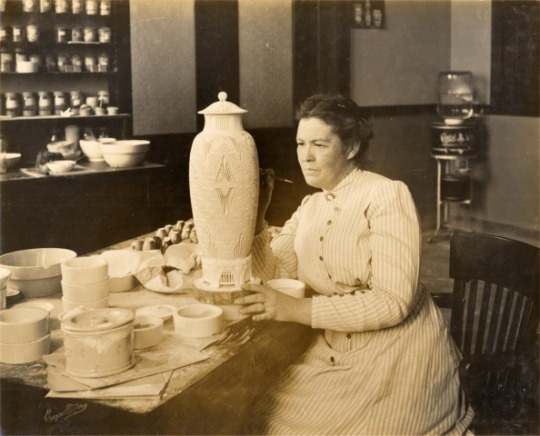
Adelaide Alsop Robineau was born in 1865, moving to Syracuse, New York at the age of thirty-five. She began her career as a China painter, as within the industry at the time, women were allowed to decorate the ceramic form but were not permitted to throw the form itself. China painting was also a popular “women’s hobby” at the time. Robineau found this to be an entry point into the world of ceramics, studying painting under William Merritt Chase and then ceramics under Charles Binns at Alfred University. She, with the assistance of her husband Samuel, established an artist’s studio and the first American magazine to focus on ceramic arts and design, Keramic Studio.
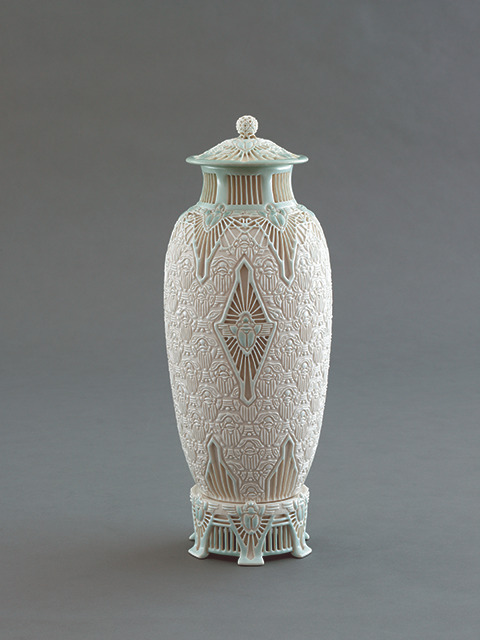
Known today as the “Mona Lisa of the ceramics world”, Adelaide Alsop Robineau’s magnum opus is colloquially named The Scarab Vase (1910) for its scarab beetle motif adorning the surface.

Ancient Egyptians regarded the scarab beetle as holy, and it was used as a symbol of day and night, life and death, and immortality. The beetle is also known as a “dung beetle” for its habit of rolling a ball of dung to the entrance of its home each night and rolling it away when it emerges in the morning. Robineau’s reference was in part to reference the daily cycle of a laborer and in part to evoke the phenomenon of Egyptomania, the European interest in Egyptian culture following Napoleon’s Egyptian Campaign of the early 1800s.

The vase itself is porcelain, standing at just over sixteen inches tall. Robineau is rumored to have spent nearly one thousand hours bringing it to full realization. She began by throwing the porcelain clay body and allowing the form to reach the bone dry stage, when she then followed by using a surgical scalpel to carve into the form (a tactic that is extremely precarious and never recommended for ceramicists). Because of the pressure this put on the dry clay, Robineau could only treat the surface of anywhere from the size of a dime to a nickel in the course of a day. This process became so intense that if one holds up the case to a light, there are portions carved so far away that the light will shine through the clay body.
Robineau’s labor gives credence to the piece’s actual title: The Apotheosis of the Toiler, which refers to the unacknowledged labor and unacknowledged talent of craftspeople. With this work, she felt a connection between the public treatment of craft and the public treatment of women; both were similarly dismissed by the art world and ignored by everyone else. Robineau, as the Toiler, was trying to elevate the status of both not past what they were considered to be below, but to equal consideration. She, as a woman and a craftsperson, wanted to lay claim to her right to be called an artist.
1 note
·
View note